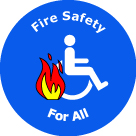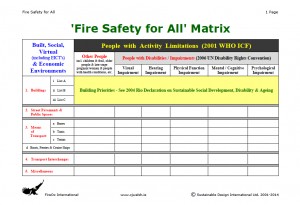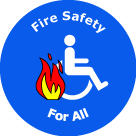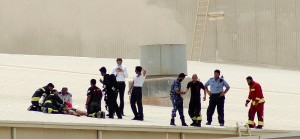2014-08-28: Earlier this month … the final straw … as I caught up on a ‘piece’ in McGraw Hill’s Architectural Record … which reproduced an original, intriguing article from designMENA.com, posted on 12 August 2014, by Nick Ames …
Rebel Architects Star In New TV Show
Qatar-based broadcaster Al Jazeera is to show a series of films focusing on radical architects from Pakistan, Brazil, Nigeria, Spain, Palestine and Vietnam. The series – entitled ‘Rebel Architecture’ – focuses on architects using design to confront urban, environmental and social problems in their communities.
Dan Davies, producer of the series, said: “We couldn’t help noticing that despite all the problems afflicting humanity, many of which architecture uniquely has the ability to assist and even solve, most of the mainstream and architectural press celebrates the aesthetics of huge iconic projects, marvelling at insanely complicated ways to fold giant sheets of metal.”
“As we face issues from floods and natural disasters to an explosion of urban populations, soaring inequality and displacement through conflict, architecture seems wholly absent. So we wanted to look beyond the discussion of the aesthetics of Star-chitecture and see what architects outside the mainstream are doing.”
The six-part series, which starts on 18 August, begins with a film documenting the work of Spanish architect Santiago Cirugeda, who uses his knowledge of planning law to occupy abandoned properties and to build structures on unused land.
It also features Pakistani architect Yasmeen Lari, who designs disaster relief shelters and Eyal Weizman, professor of spatial and visual cultures at Goldsmiths University, who explores the way the built environment is used as an instrument of occupation.
In Vietnam, the series follows Vo Trong Nghia, whose projects focus on open spaces and sustainable design, while in Nigeria, Kunlé Adeyemi has designed floating buildings to solve issues of flooding and overcrowding.
The final episode explores Rocinha, the largest favela in Brazil, with builder Ricardo de Oliveira, and master planner Luis Toledo.
“The rebel architects have to push boundaries, but they must also look beyond their own buildings,” said Davies. “They start by looking at the wider context in which they live – be it Spain hit by the financial crisis, or Pakistan ravaged by floods – and work out how they can change the status quo with architecture.”
.
I SAY …
Shouldn’t every Architect be concerned about the issues raised in Nick’s article ? And if not … why not ??
Architecture is a wide and complex field of human creative, artistic and scientific endeavour. Yet in the international and national media, both mainstream and architectural … it does appear, as presented, to be narrowly confined to the “aesthetics of huge iconic projects”, and “insanely complicated ways to fold giant sheets of metal”. And the various media continue to focus on and enthusiastically applaud the current, outrageous phallic skyscraper contest in, for example, the Arab Gulf Region, China and South-East Asia … a contest which is actively promoted by such international organizations as the US-based Council on Tall Buildings & Urban Habitat. [ I might add … with entirely insufficient attention being paid to fire safety, resilience and sustainability in those Super-Tall Buildings !! ]
If Santiago Cirugeda, Yasmeen Lari, Eyal Weizman, Vo Trong Nghia, Kunlé Adeyemi, Ricardo de Oliveira, and Luis Toledo are indeed Rebels … [ I would argue that they most definitely are not ] … and each one is working in isolation … then we must urgently instigate a Revolution …
Creative Architecture In Context !!
PRINCIPAL BARRIER …
The Institutional Framework of Today’s Conventional Architecture … typically developed to promote and protect a 19th Century Model of Architectural Practice … exerts a powerful stranglehold over the architectural profession and the schools of architecture in many countries. It is no longer ‘fit for purpose’ in the 21st Century !
Here in Ireland … a few days before reading the Nick Ames article … I attended a long Extraordinary General Meeting of the Royal Institute of the Architects of Ireland (RIAI) … called by 10 Institute Members to demand urgent, concerted action from the Institute’s Council in response to the new and very flawed Building Control Amendment Regulations (Statutory Instruments Nos.9 & 105 of 2014), which came into effect from 1 March 2014.
Far from being an enlightening and pleasurable occasion … for many small reasons, it was annoying and frustrating. The biggest reason of all, however, was that I saw no evidence whatever that either Council or the Membership understands the simple, fundamental truth that … self-regulation/self-certification does NOT work !
Refer back to my previous post.
The General Public in Ireland … also known as ‘The Long-Suffering Consumer’ … does not trust the Medical and Legal Professions to self-regulate, despite the vociferous protestations from both that their internal regulatory systems are packed-packed-packed with civilians. Yes … ‘selected’ civilians !
That particular evening in the Davenport Hotel, Dublin … the RIAI’s Extraordinary General Meeting (EGM) went nowhere … aided and abetted by Council Members at the head table. It was interesting to note that none of the 10 Institute Members who had called the meeting had a seat at that same table.
As we exit the Profound Economic Crisis following the Extravagant Celtic Tiger Years … and coldly look around us … we witness an architectural profession lost in a contextual wilderness – urban, environmental and social – while fumbling around in a legal and political maze. And, every day, we experience a sprawling, ugly, depressing and unsustainable built environment which is engaged in a sad and brutal conflict with nature.
It has taken at least a generation … but the RIAI has directly overseen the slow and progressive dilution of what it means to be an Architect in Ireland.
Time for The Revolution … To The Barricades !!
.
.
END






